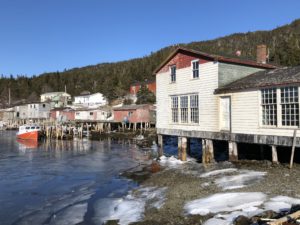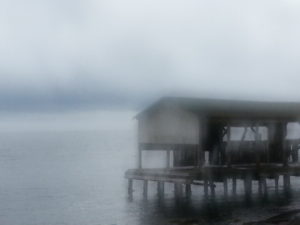The winter of 2020’s ‘Snowmageddon‘ was devastating for many of the traditional “Stages” and inshore fishing infrastructures in Newfoundland & Labrador. This is especially saddening since these original edifices represent an incredible period of ingenuity and architectural wonder. Buildings, wharves, storage facilities and dwellings which hang precariously from their rooted perches on the cliff faces that define our shorelines – they serve as a testament to the determination of our forefathers. A tribute we should cherish and strive to protect.
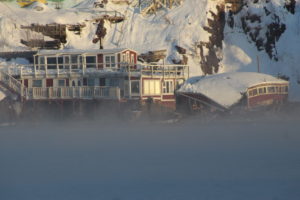
… Snowmageddon was devastating…”
Each individual property was specifically designed to accommodate the winds, waves, ice, and local phenomenon that dictated exactly how and where a “Fishing Premises” could withstand Newfoundland’s extreme weather conditions. Instead of planks, round poles (Longers) were laid unattached (not nailed) on a “rock cribbing” so large waves could roll through them without hoisting the deck and buildings into the crashing surf. Braces were angled to absorb the impact of prevailing winds and ocean currents. Entrances and openings were completed with heavy doors and shutters that could be tightly shut, preventing a lifting wind from blowing everything “to hither”. Capstans (old-fashioned home-made winches) were positioned to alleviate the strain and difficulty of hoisting everything from fish baskets to boats on a “slip way”. All of which required constant attention, adjustments, and mending to better secure their position.
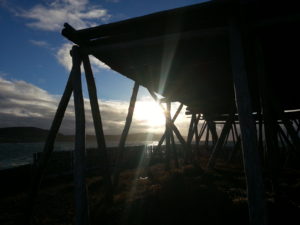
“… braces were added…”
“Stages” not only provided safe and sheltered work areas, but as well, an important social escape where families gathered to share a “swally” while they mended nets, repaired gear, and built accessories when foul weather kept them off the water. It was a place to present ideas, discuss daily occurrences, and speculate on the benefits or deterrents of new concepts yet to be tested in a good gale of wind.
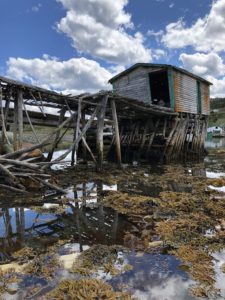
“… architectural wonders …”
Though there are many who attempt to preserve the past – they are a dying breed and with their passing, so too will these works be lost. Without their attention this infrastructure will fail, and there is absolutely no way to rebuild them given today’s health and safety standards, engineering demands, and the associated permitting required to make repairs once deterioration passes the point of no return.
Or is there?
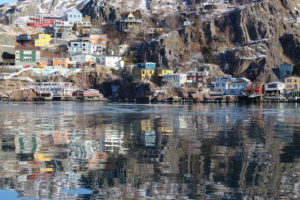
“… ardent and cherished…”
We recently lost one of Newfoundland & Labrador’s most ardent and cherished stage owners with the passing of Mr. Pearcey and the many soirees he hosted in a private fishing museum located in an old fishing stage on the ‘Lower Battery’ wharf in St. John’s harbour. Coincidentally, the gale of wind which seemed to rise in celebration for his funeral, swept away a goodly portion of his property’s underpinnings. Damage that Mr. Pearcey would have mended immediately, but still remains untouched some weeks later.
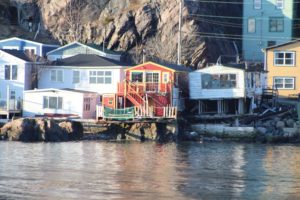
“… strive to protect…”
Given the immediate concerns with our economy and the obvious need to diversify from our dependency on oil production, wouldn’t this seem like an idyllic opportunity for our university to acknowledge these unique designs, and in their study, establish a new field of expertise for challenging construction projects and engineering solutions in extreme environments.
What an opportunity to put Newfoundland & Labrador back on the world “Stage” again!
